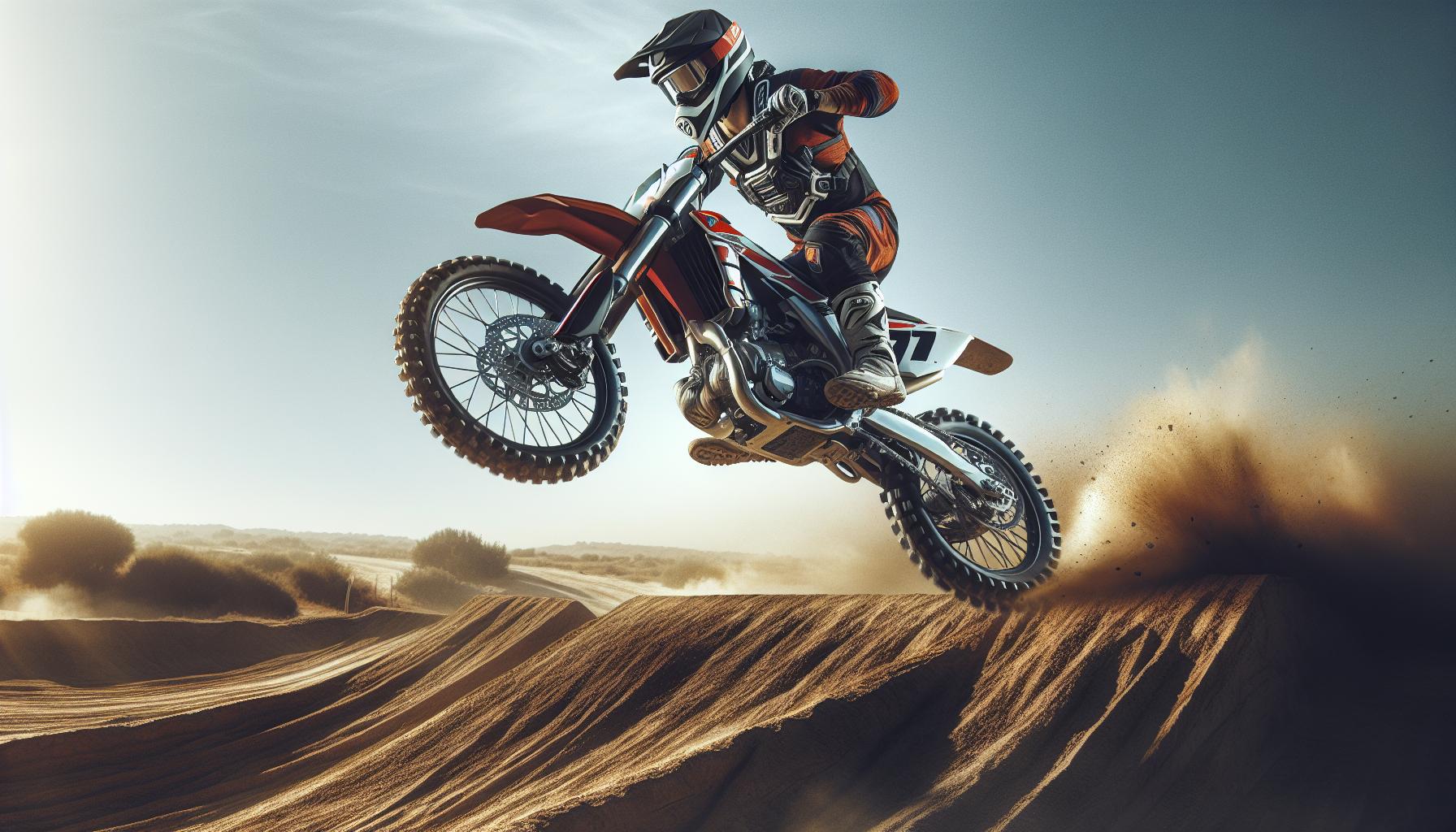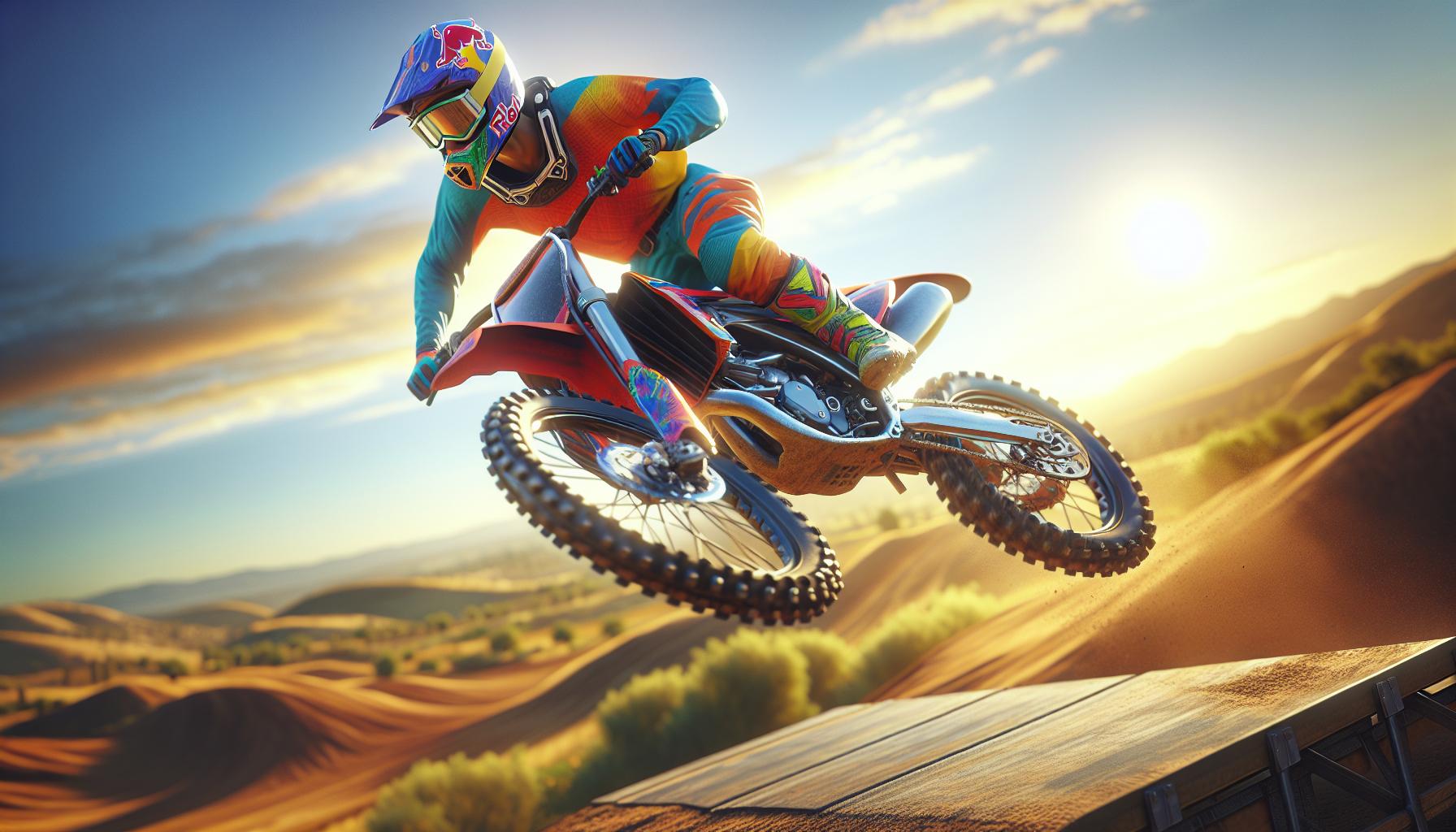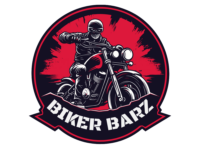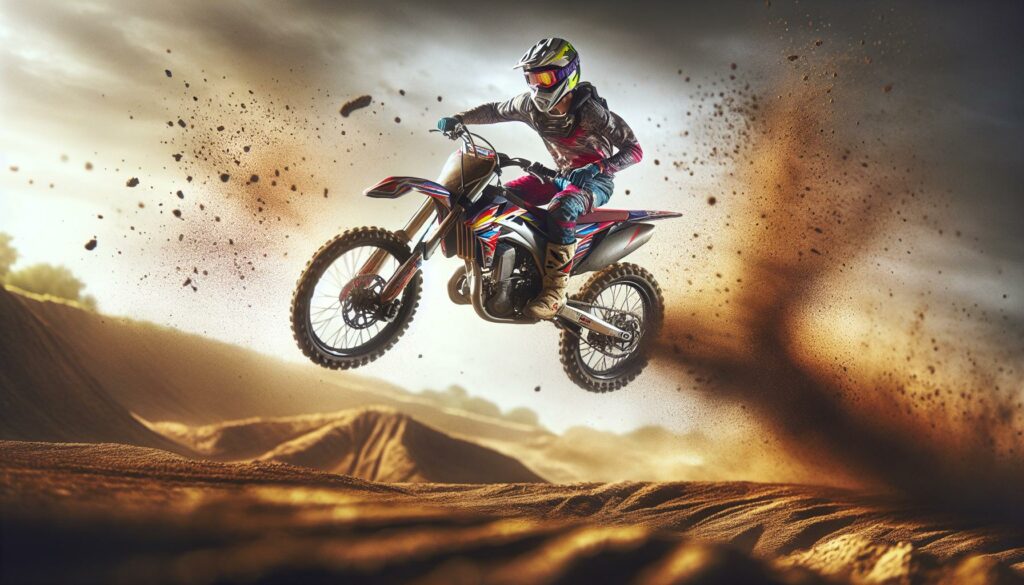Ever dreamed of catching some serious air on your motorcycle like those daredevil pros? While it might look effortless when Travis Pastrana sends his bike soaring through the sky, motorcycle jumping requires proper technique, preparation and a healthy dose of courage.
Learning to jump a motorcycle safely isn’t just about twisting the throttle and hoping for the best. It’s a skill that demands understanding the basics of physics, proper body positioning and mastering crucial techniques that’ll keep both rider and machine intact. Whether you’re an aspiring motocross rider or just looking to add some excitement to your trail rides, knowing how to properly execute a jump can take your riding skills to new heights – literally.
How to Jump A Motorcycle
Motorcycle jumping demands comprehensive safety equipment to protect riders during aerial maneuvers. The right gear minimizes injury risks while maximizing control during jumps.
Protective Equipment Requirements
Full-face DOT-certified helmets protect against head injuries during jumps. High-impact body armor includes chest protectors, knee braces, elbow guards, shoulder pads, hip protectors, wrist guards. Riders wear motocross-specific boots with reinforced ankle support, steel toe protection, buckle closures. The gear list includes:
- Certified neck braces that limit extreme head movement
- Goggles with tear-off systems for clear vision
- Impact-resistant gloves with knuckle protection
- Moisture-wicking compression gear underneath
- Padded shorts with tailbone protection
- CE-rated protective jerseys with spine guards
Bike Safety Inspection
Pre-jump motorcycle inspections focus on critical components affecting jump safety. Key inspection points include:
- Suspension settings match rider weight, jump height
- Tire pressure sits at optimal PSI levels
- Chain tension meets manufacturer specifications
- Brake pads maintain proper thickness
- Wheel spokes show correct tightness
- Control cables move freely without binding
- Handlebars remain firmly mounted
- Frame welds display no cracks
- Footpegs stay securely attached
- Engine mounts show no looseness
Riders document inspection results in maintenance logs tracking wear patterns on jump-critical parts. Equipment checks occur before each jumping session to identify potential failure points.
Preparing Your Motorcycle for Jumps

Proper motorcycle preparation creates the foundation for safe jumping. These technical adjustments optimize the bike’s performance for aerial maneuvers.
Suspension Setup
Suspension settings determine how a motorcycle handles jumps through compression damping adjustment. The sag measurement sits between 95-105mm for most dirt bikes with a rider in position. Front fork compression requires 8-12 clicks from fully closed for optimal jump performance. Rebound settings match riding conditions: 6 clicks for hard-packed tracks or 8 clicks for softer terrain. Advanced riders adjust high-speed compression to manage bigger jumps by increasing it 2-3 clicks from baseline. Setting proper ride height improves stability with the rear shock preload at 102mm static sag.
Tire Pressure and Tread Check
Tire pressures play a crucial role in jump takeoffs and landings. Front tires maintain 12-13 PSI while rear tires run at 11-12 PSI for optimal grip. Tread depth measures at least 5mm in the center knobs for reliable traction. Sidewall inspection reveals any cuts or damage that compromise stability. Fresh tires provide 100% tread contact on takeoff ramps. Rim locks stay torqued to manufacturer specifications preventing tire spin. Proper tire direction ensures maximum forward bite during acceleration. Balanced wheels eliminate wobble at high speeds essential for controlled jumps.
Basic Jumping Techniques

Executing motorcycle jumps relies on mastering fundamental techniques through progressive practice. Understanding proper body positioning combined with the right approach speed creates the foundation for successful jumps.
Proper Body Position
Body positioning starts with a balanced attack stance on the motorcycle. Riders maintain bent knees with elbows up at 90 degrees while gripping the handlebars with two fingers positioned near the brake levers. The head stays up with eyes focused on the landing zone, not the takeoff ramp. The lower body grips the bike using the inner thighs against the tank while keeping feet positioned on the footpegs at the balls of the feet. This positioning allows riders to absorb impacts through their legs upon landing while maintaining control of the bike throughout the jump.
Speed and Approach
Approach speed varies based on jump height distance ramp angle. Riders enter at 15-25 mph for smaller tabletops measuring 20-30 feet in length. Double jumps require 25-35 mph depending on gap distance. The approach line stays straight with consistent throttle application through the face of the jump. Riders position themselves centered on the bike during the approach phase standing tall enough to allow the suspension to work effectively. The throttle remains steady through takeoff avoiding sudden acceleration or deceleration which affects the bike’s trajectory.
Mastering Different Types of Jumps

Motorcycle jumps come in various forms, each requiring specific techniques and approaches for successful execution. Understanding these distinct jump types enables riders to adapt their skills and tackle diverse terrain challenges effectively.
Table Tops
Table top jumps feature a flat surface between the takeoff and landing ramps, making them ideal for beginners. The flat section provides a safety margin for landing errors, reducing the risk of crashes. Riders maintain a steady throttle through takeoff at 15-20 mph for small tables or 25-30 mph for larger ones. The optimal body position includes keeping the torso centered over the bike with elbows up during the flight phase. Landing mechanics focus on meeting the downward transition with both wheels simultaneously while maintaining slight throttle input for smooth touchdown.
Double Jumps
Double jumps consist of two separate ramps with a gap between them, demanding precise speed control and timing. The approach speed ranges from 30-40 mph depending on gap distance, with larger gaps requiring higher velocities. Riders preload the suspension at takeoff by compressing then extending their legs. The bike remains level throughout the flight path using throttle modulation. Landing preparation begins mid-flight by spotting the downramp early to align the motorcycle with the landing transition.
Step-Ups
Step-up jumps elevate riders to a higher landing point, requiring controlled power delivery and forward weight bias. The approach speed averages 20-25 mph on smaller step-ups or 30-35 mph for taller variations. Riders shift their weight forward during takeoff to prevent the front wheel from dropping. Throttle control maintains steady momentum up the face while the body stays loose yet controlled. Landing techniques emphasize absorbing impact through bent knees as the rear wheel touches down first on the elevated platform.
Common Jumping Mistakes to Avoid
Motorcycle jumping errors lead to accidents ranging from minor scrapes to severe injuries. Understanding these mistakes helps riders develop safer jumping techniques while protecting their equipment.
Landing Position Errors
Incorrect landing positions create dangerous situations during motorcycle jumps. Riders who lean too far back risk looping out upon landing, while excessive forward lean causes front-end compression. Maintaining elbows up prevents arm pump through impact absorption. A stiff body position reduces shock absorption capacity, leading to harsh landings that damage suspension components. Experienced riders keep their feet on the footpegs throughout the landing phase to maintain optimal bike control. Looking down instead of focusing on the landing zone decreases reaction time by 0.3 seconds, limiting the ability to adjust body position mid-flight.
Speed Miscalculations
Approaching jumps at incorrect speeds creates hazardous landing scenarios. Under-jumping occurs at speeds below 15 mph on standard tabletops, causing the front wheel to drop prematurely. Over-jumping happens when riders exceed 25 mph on 30-foot doubles, resulting in flat landings that compress suspension beyond design limits. Inconsistent throttle application through takeoff alters the bike’s trajectory by up to 3 feet. Professional riders maintain steady acceleration through the face of jumps to achieve optimal arc height. Cross-jumping occurs when riders drift sideways during approach, reducing landing stability by 40%.
Advanced Jumping Skills
Advanced motorcycle jumping techniques transform basic aerial maneuvers into stylish expressions of control and precision. These skills separate professional riders from beginners through mastery of complex body positioning and bike manipulation.
Whips and Scrubs
Whips involve turning the motorcycle sideways in mid-air while maintaining forward momentum. Riders initiate a whip by leaning the bike to one side at takeoff using handlebar pressure and hip rotation. The technique requires precise timing to straighten the motorcycle before landing. Scrubs reduce jump height by pressing the bike down and parallel to the face of the jump, creating a lower arc through the air. This technique starts with the rider positioning their body weight forward and to the inside of the turn while applying downward pressure on the outside footpeg. Professional riders use scrubs to maintain speed through jumps by minimizing time spent in the air.
Distance Control
Distance control focuses on manipulating the motorcycle’s trajectory to clear specific gaps or land in optimal spots. Riders adjust their distance by modulating throttle input during takeoff and shifting body weight forward or backward in flight. Short-jumping requires riders to chop the throttle slightly before takeoff while positioning their weight forward. Over-jumping demands full throttle through takeoff combined with a backward weight shift to extend the flight path. Experienced riders match their bike’s power delivery to wind conditions adjusting their approach speed by 5-10 mph in headwinds or tailwinds.
Training and Practice Tips
Effective motorcycle jumping training focuses on systematic skill development through structured practice sessions. Safe progression minimizes risks while building confidence and technical proficiency.
Starting Small
Initial jump training begins with 6-inch dirt mounds on flat terrain to master basic techniques. Riders practice maintaining proper body position over 20-30 repetitions at speeds under 15 mph. Small table tops measuring 2-3 feet in height serve as the next progression step, allowing riders to experience brief moments of air time with minimal consequences. Practice sessions incorporate fundamental skills:
- Executing controlled approaches at consistent speeds
- Maintaining neutral body position through takeoff
- Landing with both wheels aligned
- Rolling through transitions smoothly
- Building muscle memory through repetitive drills
Progression Methods
Structured skill advancement follows a measured timeline based on demonstrated competency. Riders graduate to larger obstacles after mastering each height increment:
- Week 1-2: 6-12 inch dirt mounds
- Week 3-4: 2-3 foot table tops
- Week 5-6: 4-5 foot table tops
- Week 7-8: Small double jumps
- Week 9+: Advanced jump combinations
- Landing consistency rate of 90% before increasing difficulty
- Clean execution of 25 consecutive jumps at current level
- Ability to maintain proper form during fatigue
- Demonstrated control in varying wind conditions
- Successful completion of emergency bail-out drills
Motorcycle jumping isn’t just about getting airborne – it’s a skill that demands dedication practice and unwavering attention to safety. Success relies on proper preparation thorough gear checks and mastering essential techniques through systematic training.
Riders who commit to learning the fundamentals and gradually progress to advanced maneuvers will find themselves better equipped to handle the challenges of motocross jumping. Whether tackling tabletops doubles or executing stylish whips the key lies in combining technical knowledge with patient practice.
With the right approach and respect for safety protocols motorcycle jumping can be an exhilarating and rewarding aspect of dirt bike riding. The journey from basic jumps to advanced aerial maneuvers is challenging but achievable for those willing to put in the work.

